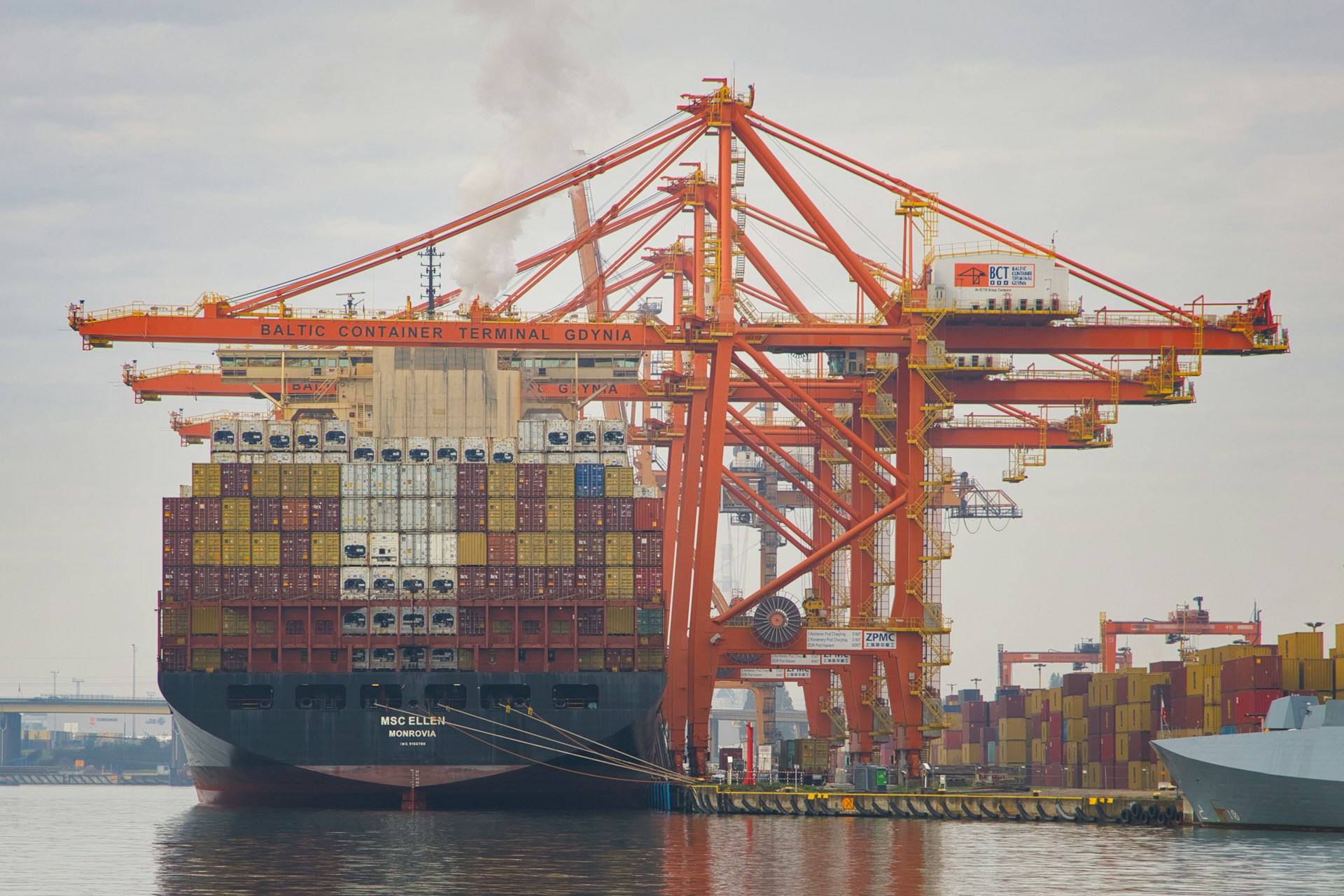Ships have long been referred to as "she" in maritime tradition. This personification of vessels as female has been a common practice among sailors and maritime enthusiasts for centuries.
Let's explore the reasons behind this intriguing custom and its significance in nautical culture.
The Origin of Calling Ships "She"
The practice of referring to ships as "she" dates back to ancient times. While the exact origin is unclear, several theories attempt to explain this tradition:
- Motherly Protection: Ships were seen as protectors of their crew, much like a mother caring for her children.
- Feminine Grace: The elegant lines and graceful movement of ships on water were associated with feminine qualities.
- Linguistic Roots: In some languages, the word for "ship" is grammatically feminine.
- Sailors' Affection: Crew members developed a deep emotional connection with their vessels, similar to a relationship with a loved one.
Below, you can read more about each of these origins:
1. Belief in a woman's protective role
In the past, sailors would spend a lot of time at sea and frequently develop strong attachments to the ships they sailed on. As a result, it was typical for the sailors to refer to their ship with affection.
Ancient seafarers were said to be "married to the sea" and frequently named their ships after the women they cherished as a mark of respect for them.

Goddesses and mother figures would also be used as the names for ships to perform a protective role in looking after the ship and crew.
It, therefore, became customary for many vessels to carry female figureheads designed to mimic these people.
A figurehead was frequently found on the front of a ship between the sixteenth and twentieth centuries. The figurehead, typically a stunning woman, was often depicted as guarding the ship and caring for those who sailed aboard her.
2. Feminine grace
The tradition of calling ships "she" is closely linked to the idea of feminine grace and elegance. Many historians believe this practice arises from the desire to associate vessels with beauty and allure—qualities often attributed to women. The sleek lines of a ship and its ability to glide through water evoke images of femininity, leading to the personification of ships as female.
This connection is reinforced by the historical trend of naming ships after women, whether goddesses or significant female figures, emphasizing that a ship, like a woman, deserves care and respect.
3. The Latin origins
The term “ship” actually has Latin origins. History says the word was derived from the Latin “navis,” which means transport or cargo boat.
Although modern English does not observe gendered terminology, Latin does. “Navis” is a feminine word; some claim that this is why we refer to ships as she.

4. The pronoun is not the only female thing
The pronoun is not the only female thing when we refer to ships. The first journey or a brand-new ship is often called the maiden voyage.
In the naming ceremony, the general wish of everyone is for the ship to prosper. Frequently, “God bless her, and all who sail on her” is a common way to cap off a speech during the ceremony.
Speaking of ceremonies, the tradition is for a ship to have a godmother.
The ship’s godmother is chosen and given this honorary title to bless and guard the ship. The tasks are straightforward: godmothers go to the ceremonial launch and naming ceremony for their ship, where they bless and formally name it.
It's common to refer to ships as having "sister ships." A vessel with a similar or identical design is called a sister ship. Most cruise lines as well as traditional merchant vessels such as container ships, will have sister ships that together make up a group referred to as a class.
Why The Tradition Persists
Despite modern efforts to use gender-neutral language, many mariners continue to refer to ships as "she." This enduring practice reflects:
- Maritime Heritage: It honors the long-standing nautical tradition and history.
- Emotional Connection: It emphasizes the special bond between sailors and their vessels.
- Personification: It gives ships a sense of personality and life.

Modern Perspectives
In recent years, some maritime organizations have moved towards using "it" instead of "she" when referring to ships. This shift reflects changing attitudes towards gender in language. However, many sailors and maritime enthusiasts continue to use the traditional "she" out of respect for nautical heritage.
How are ships named?
Naming a person is essential—there’s no question there—but nowadays, we fondly name everything near and dear—pets, musical instruments, vehicles, and, yes, ships.
Almost all boats, whether military or civilian, are ceremonially christened before they are put into the water.
However, naming a vessel is a colorful occasion, unlike how we call cars and other land vehicles.
Over the years, the processes and customs around ship naming have changed. After the ship's construction is complete, the vessels are blessed solemnly and given their names during the ceremonial ship launching.
On the day of ship launching, the ships will be adorned with flags and vibrant ribbons, and musicians will play during the ceremony.
Although there isn't a set process, the ceremony typically starts with the ship's launch. Then, the ship's godmother, another custom when a female citizen "sponsors" a vessel to wish good luck and safe travel, smashes a champagne bottle on the ship's bow after the launch.

The ship's name will be formally announced during the christening ceremony in front of the invited audience.
Before owners started to name their ships after key females in their lives, most civilian ships were named after goddesses and other mythological figures.
As for choosing a name for a new naval vessel in countries with strong military powers, they observe a lot of consideration and tradition.
If you want to learn more about how naming ships came to be, read this post.
Ship Naming in Popular Culture
In pop culture, enthusiasts of the Royal Family dived into the penultimate season of Netflix’s The Crown and it’s here we discover a historical reference to a ship being referred to as “she”.
It’s April 16, 1953, and the young Queen Elizabeth can be seen in John Brown’s yard on Clydeside, Scotland. This shipyard was the temporary home to a newly completed 4,000-ton royal yacht—and the site of the launching ceremony for the newest addition to the Royal Fleet.
“I hope that this brand-new vessel, like your brand-new Queen, will prove dependable and constant. Capable of weathering any storm. I now take great pride in naming this ship Britannia”

Her Majesty’s voice was lost in the din of cheers from builders and the assembled audience.
She caps off her speech with a wish:
“I wish success to her. And to all who sail in her.”
Did the Queen refer to the ship as a female? Or was it because the main passenger of the yacht was a female? It seems more likely that the Queen was referring to the ship itself (or should that be herself) in the traditional way at the time.
Conclusion
Whether you choose to call a ship "she" or "it," understanding the rich history behind this tradition adds depth to maritime culture. As we navigate the waters of language and tradition, the debate over ships' pronouns continues to be a fascinating aspect of nautical lore.
But life aboard a ship offers one-of-a-kind adventures and rewarding experiences. If you’re ready to start or continue working on ships, Martide can help get you started. Build your resume today, download our seafarer job app from the Apple App Store or from Google Play or view our exciting job vacancies.
This blog post was originally published on November 14th 2022 and updated in January 30th 2025

Gavin Hirst
Gavin is a contributing writer to the Martide blog who covers topics ranging from life at sea to maritime crew management software. A native Brit who is now based in Auckland, NZ, Gavin is also an SEO expert and partner in a successful digital marketing agency that has offices in New Zealand and the United Kingdom.
New Zealand


is the only site for maritime jobs




